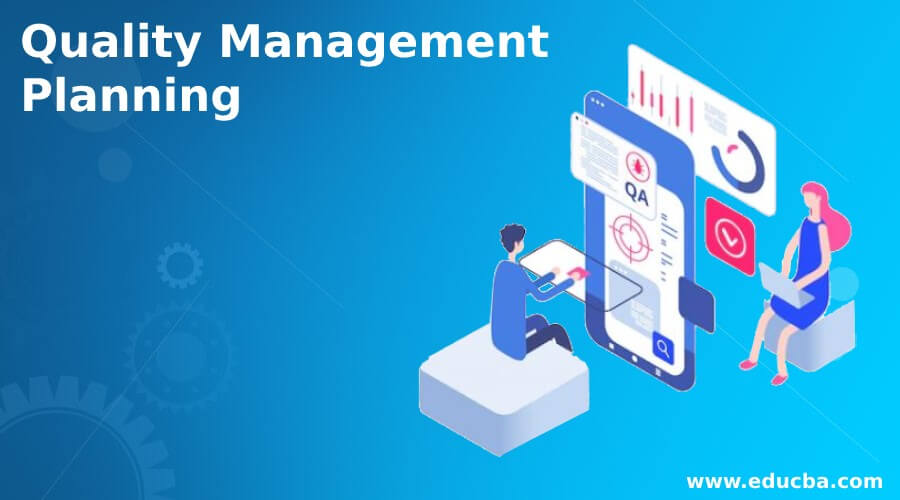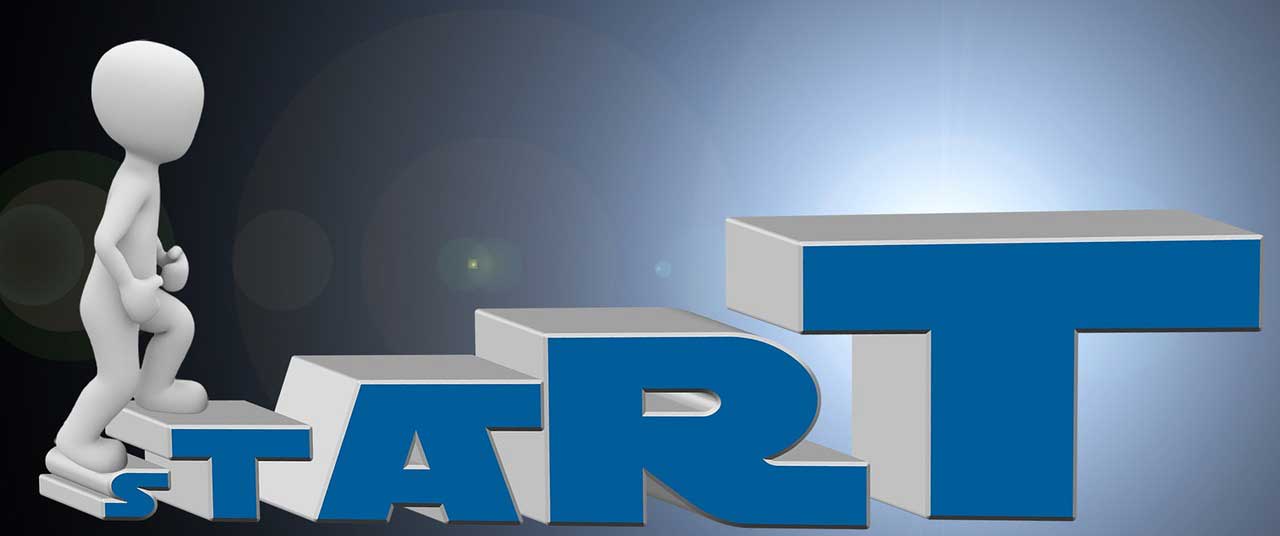Updated April 20, 2023

Definition of Quality Management Planning
Quality management, as the name suggests, is the overall monitoring of any organization’s product, services, or internal processes for its overall betterment. It ensures consistency in the product or service delivered so that the customer experience is of premier quality every single time. Quality management planning encompasses not only the product or service but also the processes and goals of the organization. Maintaining uniformity in the organization’s objectives, products, or services is the core function of quality management planning.
To achieve superior quality management planning, classify it into four categories: quality planning, assurance, control, and improvement.
- Quality planning is the foremost step in attaining the quality management process. It helps identify the areas that need improvement and the way and means to achieve the desired goals. It also encompasses the quality assurance and controls part of total quality management. It is the first step and gives a roadmap for further processes.
- Quality Assurance is the combination of processes and techniques that help identify the means of achieving the desired level of quality for a particular product or service. It helps identify the lags in the already established processes to achieve the objective of attaining unswerving quality.
- Quality control, as the name suggests, is the compilation of all those quality management processes that help attain a level of control in the desired level of set quality standards and point out any deviation from the same. It primarily reviews the quality of the product or service to check whether it is of the set standards.
- Quality improvement is a continuous, never-ending quality management process that keeps upgrading occasionally. With the advent of technology, newer and more apt methods of measuring quality standards get introduced into the system; it is a holistic process that involves applying newer systems from time to time and reinventing the older systems and keeps finding better methods. Organizations cannot afford to stay stagnant in how they function; they must keep re-establishing the older processes with new, improved versions.
Best Practices Guide to Quality Management Planning.
To ensure that it is a fruitful process, there are certain best practices that, if followed diligently it become smooth sailing for any organization and are not taken as a task other than the routine functions of the organization.
- It is an integral part of the organization’s objectives.
- Processes monitoring, not people, is the key to effective quality control
- The systematic approach to quality management planning
- Problem analysis and not mere identification
- Quality improvement is a never-ending quality management process
Quality management planning is an integral part of the organization’s objectives
It should not be taken as a function different from the organization’s routine processes; it is a continuous process that has to be followed in the day-to-day practice of the organization rather than taking it up separately and then finding loopholes in the internal process. Many times employees feel it is a hindrance to their work. However, it is an integral part of the overall process of delivering superior product quality.
It ensures that no gaps are found later that must be rectified by following a small step-by-step process. The approach is to continuously ask how processes can improve for better results rather than who can achieve better results. It focuses on the quality management process for answering difficult questions rather than on people. It is essential to understand that quality can be measured quantitatively and must be managed at all costs.
It is not difficult to manage quality; it is difficult to remain stuck with customer complaints and not know how to solve them. For a better quality management program, it is essential to document each and every quality management process so that quality can be measured in definitive terms and the specific standards set are centrally acknowledged and available to one and all in the system; this way, there is no ambiguity in the various functions of quality management program and in the objective the company tries to attain through quality management planning.
Process monitoring, not people, is the key to effective quality control.
Organizations have understood that processes need continuous improvement, not people. Any process in itself is not all-inclusive and cannot be perfect. Instead of impugning people for non-performance, companies now have shifted focus to getting to know their processes in detail and trying to find out their loopholes, analyze them in detail, and fix the problems.
Companies now understand that smooth and easy processes enhance not only the organization’s speed and quality of functioning but also trust and loyalty, resulting in an additional customer-centric approach. They have understood that this way, it becomes the collective responsibility of each and every employee. Instead of concentrating on doing their job or knowing only my job, the employees think about getting the work done and knowing the process in detail.
An effective quality management planning system can be implemented when all the people involved are a part of the solution process rather than the problem. Every participant, be it employees, customers, or suppliers, should be a part of the quality management process. The standards set by the company for attaining the desired level of quality should be in consonance with all stakeholders. Involvement from every sector of the team will help in having an approachable holistic goal and implementing it.
A systematic approach to quality management planning
Follow a systematic approach to the quality management program; qualitative data cannot assure the best quality to the client. The processes and systems must be analyzed to ensure consistent quality is maintained in every product or service aspect. This way, the whole process is treated as a complete system, and they have not seen poles apart.
Each quality management process is interrelated, and identifying the aspects of each process is essential for the betterment of any organization; only then can an all-inclusive approach toward quality management programs be fruitful. Instead of blaming the people, the company should focus on rectifying the problem and then train and motivate the people to use the quality management processor systems to increase productivity and be of respectable quality.
Companies should proactively find any issues at the beginning rather than finding ways to fix them later. They should be ready to keep track of all the developments from time and time and keep documenting everything, creating reports, reviewing, and analyzing them incessantly to enable better quality maintenance. Such a method ensures that the companies would not wake up one fine day to some major problem but would keep resolving minor issues from time to time so that they do not snowball into major issues later.
Quality management planning was always a part of the organization’s framework; in earlier times, it was done by inspecting the various aspects of the production process. With the advent of technology, it has transformed into various well-defined theories, tools, and practices that lead to proper and holistic quality management planning. To substantiate the above, let’s take the example of Six Sigma, which was developed only for finding out the variations in the manufacturing processes in the electronics industry, primarily for Motorola Inc. In contrast, today, Six Sigma is the holy grail of quality management planning and is used in numerous industries and several departments.
Recommended courses
Problem analysis and not mere identification
Another important aspect of it is a problem analysis. To exercise quality control, it’s necessary to have a clear-cut method of in-depth analysis of the processes involved. Quality control is exercised by analyzing processes for dissipation and using appropriate methods in quality management planning.
Quality control is an ongoing quality management process and cannot be delegated to a particular function or dimension of any production process; it implies inspecting and rectifying at every production stage to maintain the desired level of quality. Reviewing the already prevalent system regularly goes a long way in solving minor issues at the early stages only.
Proper analysis and review are essential in understanding the reason behind a particular lag; quality control, or QC as it is normally referred to, is the quality management process wherein each and every product is carefully examined and analyzed so as to catch any defect in the first place so that proper and timely decisions can be taken. Any decision is effective only when it is taken judiciously and is based on actual facts and figures; hence, organizations must gather data and information from time to time to analyze it carefully and come to the necessary conclusions.
Once quality standards are set, they should be communicated to all the teams so that they know what is expected from them; moreover, the quality standards should be archived as the reference point for other situations that might crop up in the future so that all the teams are on the same page. There is no ambiguity in the systems.
Quality improvement is a never-ending quality management process.
Quality improvement isn’t static; it is like a never-ending river flowing. The role of quality management planning is to ensure that agreed-upon objectives are met once data has been analyzed and quality standards set.
This can be done by communicating the set standards to all the stakeholders. Moreover, the quality standards are set in accordance with the feedback from all the stakeholders, and each and every one of them is equally involved.
This way, the system has no ambiguity, and each employee or production line knows what is expected. Achieve a quality management program through various processes, making it an ongoing daily process. Continuous quality improvement is termed Kaizen, a Japanese term Masaaki Imai introduced in his book {Kaizen. Kaizen constantly identifies ways to attain quality control at every level of the organization, from the top to the bottom of the hierarchy.
TQM applies to all organization processes, including logistics, assembly line, and purchasing, and involves all stakeholders. Its goal is to achieve lean manufacturing by eliminating waste and producing at the least cost with maximum quality standards.
Quality management involves meeting standards without adversely affecting cost, time, or scope. It’s a universal approach that considers costs and benefits.
TQM sets, controls, attains, and continuously revises quality standards. It’s an integral part of the organization’s overall strategy and approach, not a separate function. In this age of shrinking margins, companies can’t avoid investing in quality management programs; it has become an essential part of their corporate strategy.
Quality management involves all stakeholders and is not a separate system but an integral part of the overall process. Employees play a crucial role in meeting standards and contributing to the company’s development.
Recommended Articles
This has been a guide to the Role of a Project Manager. Here we discussed the basic concepts and responsibilities of the Project Manager. You can also go through our other suggested articles to learn more –




